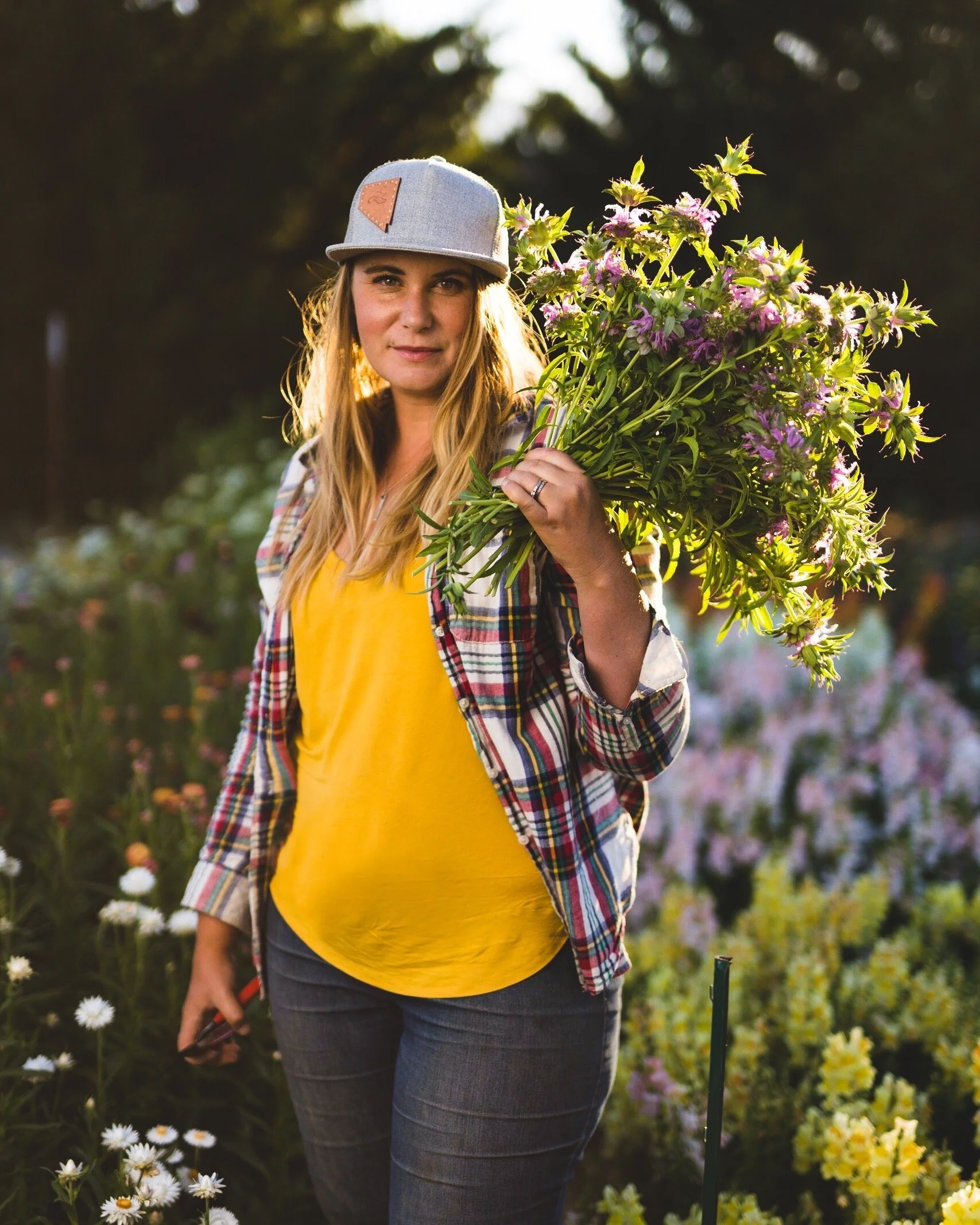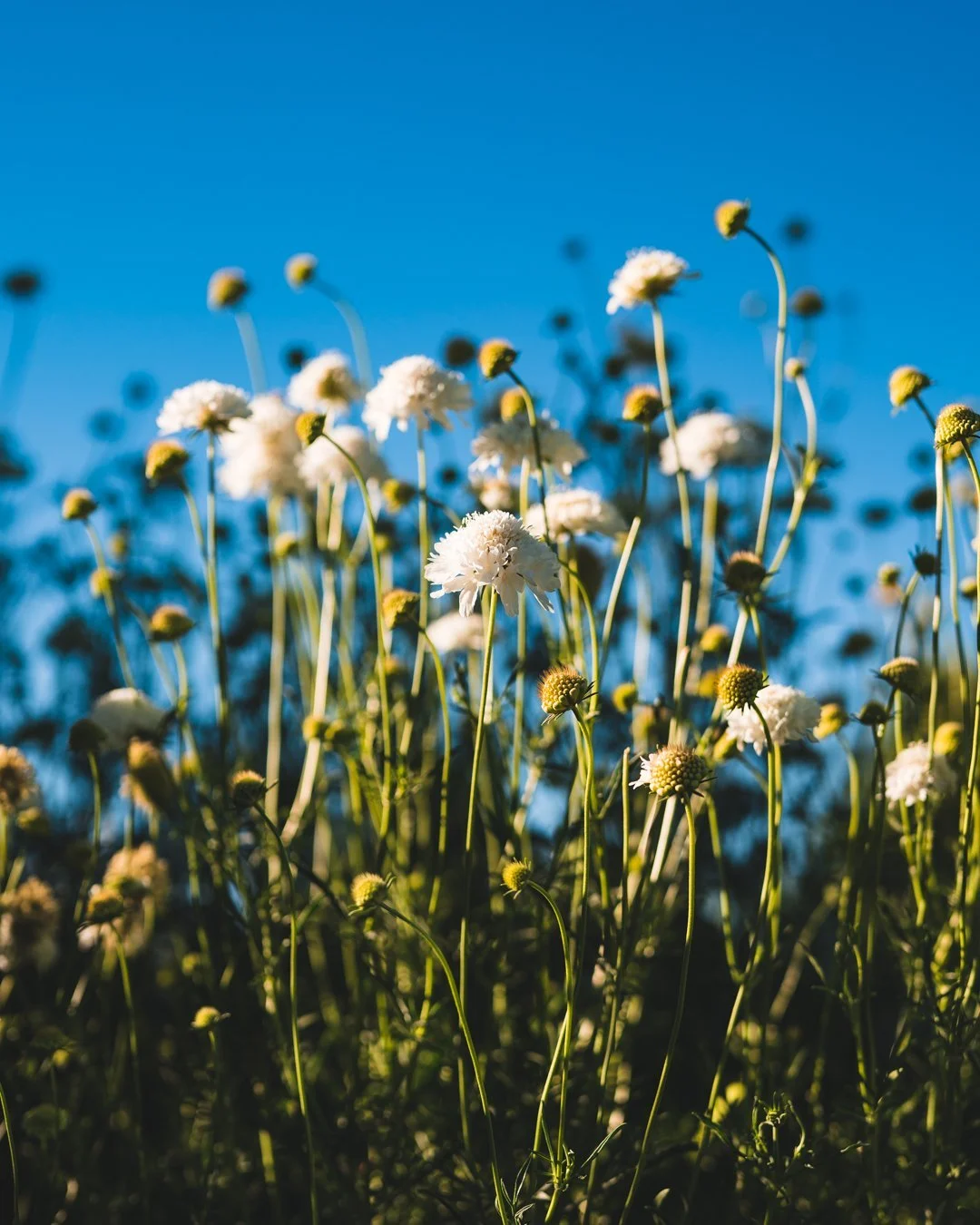5 Reliable Varieties That Save My Flower Farm Every Season
Flower farming in Northern Nevada comes with unique challenges. With unpredictable weather—including 40°F daily temperature swings and strong winds ripping down from the mountains—growing conditions can be… unstable, to say the least!
Over the years, I’ve found certain varieties that handle whatever nature throws at them. They may not be as flashy as dahlias or ranunculus, but they’re reliable, productive, and versatile—true workhorses of the flower field.
These “Goldilocks” crops save the day from late spring to frost and even beyond. Here are my top five, along with tips for growing and using them.
A sunset harvest of ammi, showcasing its delicate, airy blooms that bring a wildflower vibe to any arrangement.
1. Ammi
Ammi, also known as False Queen Anne’s Lace or flowering carrot, is one of my absolute must-haves. It fills a bouquet beautifully, gives that wildflower vibe customers love, and thrives from mid-spring to frost. Plus, it’s a magnet for beneficial predators like ladybirds and native bees, which help keep pests at bay all season.
Growing Tips:
Start Early: Sow seeds in deep cells or soil blocks 4–6 weeks before planting out. Direct sowing works, too, but seeds need light to germinate.
Stagger Successions: Start early varieties like Ammi Majus “Select White” for cool spring blooms, then switch to Ammi Visnaga “Green Mist” and Daucus Carota “Dara” for summer and fall.
Harvest Carefully: Pick when flowers are flat but not fully mature to avoid wilting or shattering.
Why I Love It:
Ammi’s versatility in designs and reliability in the field make it indispensable. Whether as a filler, a wildflower accent, or even a textural seed head for boho designs, it’s always a winner.
Harvesting bee balm in the golden light of sunset—this reliable crop adds whimsy and texture to bouquets all season long.
2. Monarda (Bee Balm)
When the spring blooms fade and summer crops are still getting started, bee balm comes to the rescue. Its unique, spiky flowers look like something out of a Dr. Seuss book, and it blooms continuously with the right care.
Growing Tips:
Start Early and Succession Sow: Start seeds 10 weeks before planting and stagger successions for continuous blooms.
Space for Airflow: Plant at 7"x7" spacing to prevent crowding and allow for strong stems.
Harvest Right: Pick when flowers are fully purple; too early and they’ll wilt.
Why I Love It:
Bee balm is cold-hardy, low-maintenance, and works as a spike element in bouquets or as a fun accent for mixed arrangements.
White scabiosa in full bloom against a crisp blue sky—a timeless favorite for wedding work and airy designs.
3. Scabiosa
Scabiosa’s delicate, airy blooms are a staple on my farm. Whether it’s the vibrant Scabiosa atropurpurea, the elegant Scabiosa caucasica, or the textural Scabiosa stellata (Paper Moon Flower), this crop is a favorite for wedding work and beyond.
Growing Tips:
Start as Transplants: Sow seeds 4–6 weeks before planting and space at 7"x7". Trellis to prevent tangling.
Succession Plant: For peak blooms, succession sow every 3 weeks until early summer.
Harvest Smart: Pick fresh blooms when partially open and stellata seed heads when the inner seeds darken.
Why I Love It:
Scabiosa is perfect for event work and provides fun, textural seed heads to elevate any design.
A close-up of the New Look dusty miller patch, showcasing its silvery foliage that ties designs together beautifully.
4. Dusty Miller
Dusty Miller may not be flashy, but it’s a lifesaver for foliage-starved farmers like me. It ties designs together beautifully and keeps going strong through frost.
Growing Tips:
Start Early: Sow seeds 10–12 weeks before planting and surface sow, as light aids germination.
Overwinter for Perennials: Dusty Miller survives in my Zone 6b garden and comes back year after year.
Harvest Freely: Pick as needed; it’s tough and forgiving, with an incredible vase life of 10+ days.
Why I Love It:
Dusty Miller’s silver foliage adds elegance to any bouquet, especially paired with salmon dahlias. It’s also great for crowns, boutonnieres, and fall weddings.
A handcrafted sugar pinecone swag adorned with burgundy strawflowers, dried acorns, and moss. The burgundy strawflowers, both fresh and dried, highlight their incredible versatility in designs. Evergreen and magnolia leaves cascade gracefully from the rope, making this a stunning seasonal decoration.
5. Strawflower
Strawflower is my all-time favorite! Customers adore its papery texture and vibrant colors, and it’s just as beautiful dried as it is fresh.
Growing Tips:
Fresh Seeds Are Key: Use fresh seeds each year for better germination. Start in late January or early February.
Plan Successions: Plant 2–3 successions to ensure continuous harvests.
Harvest at Any Stage: Pick fresh flowers when the petals are just starting to unfurl, or wait for fully open blooms to dry.
Why I Love It:
Strawflowers are textural, long-lasting, and so versatile. They’re a joy to work with and a customer favorite for everything from bouquets to dried arrangements.
A sunset arrangement in a white compote featuring the reliable blooms and seed heads of ammi and white scabiosa, accented by Chim Chiminee black-eyed Susans and cascading emerald tails amaranth. These dependable crops shine both in the field and in designs.
These five varieties may not steal the show like dahlias or ranunculus, but they are the backbone of my farm. Reliable, versatile, and productive, they handle Nevada’s wild weather swings and keep me supplied with blooms all season long.
What about you? Do any of these varieties make your list of go-to crops, or do you have other lifesavers in your field? Share your favorites in the comments—I’d love to hear what works for you!
Curious about the crops that didn’t make the cut? Check out my blog 4 Varieties I’ll Never Grow Again to see what didn’t work for me—and why!
We are looking forward to sharing more blooms with you soon.
Jessica & Graham







